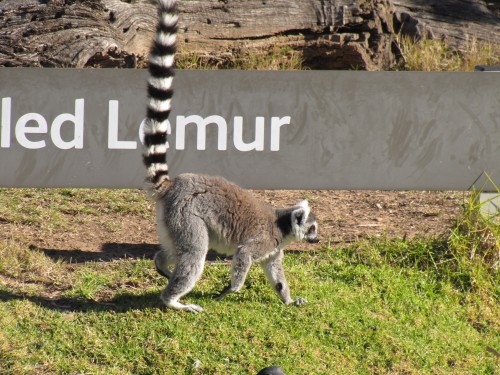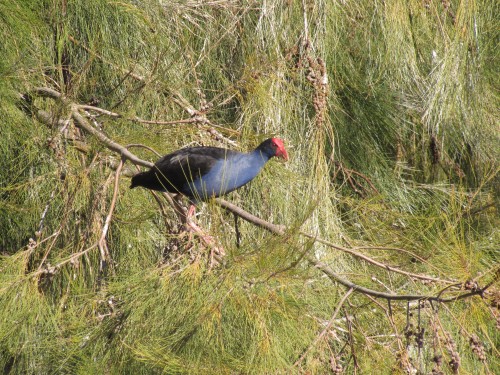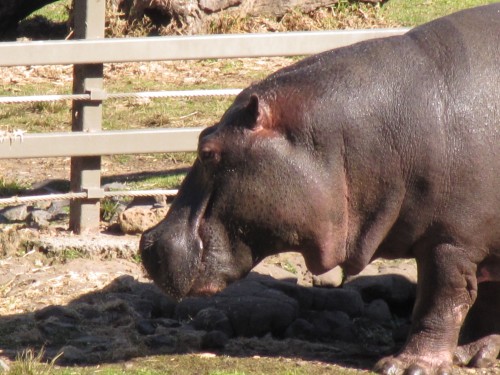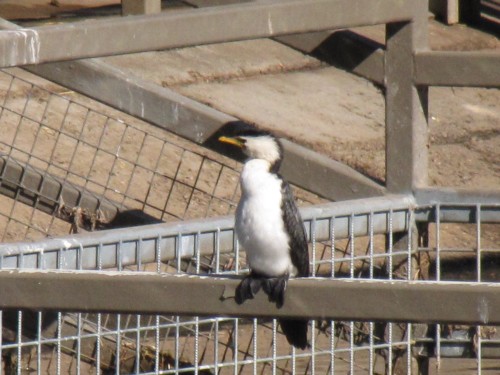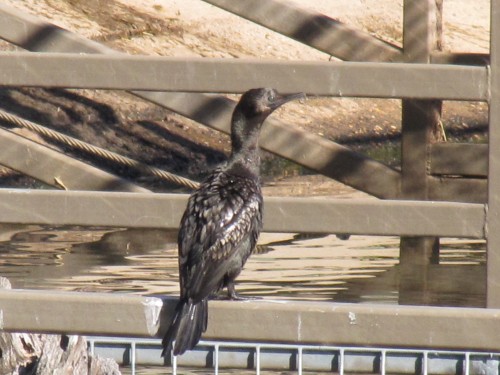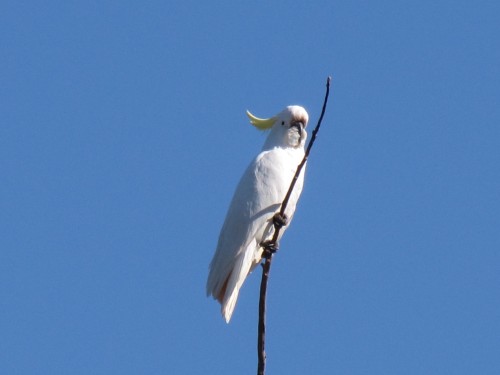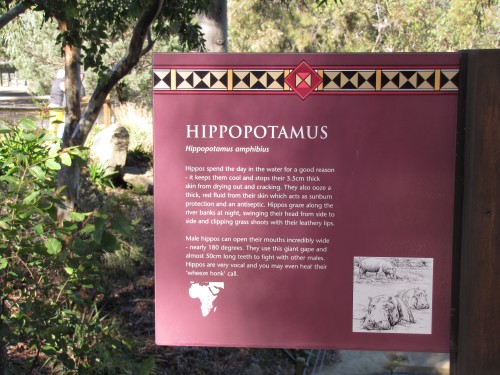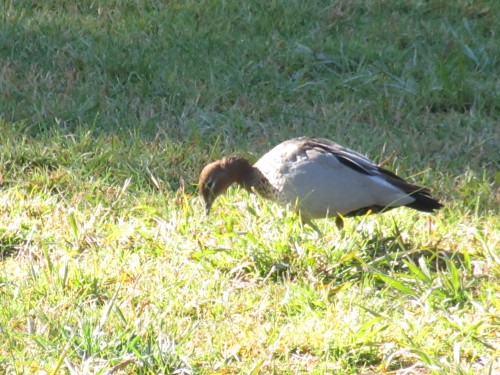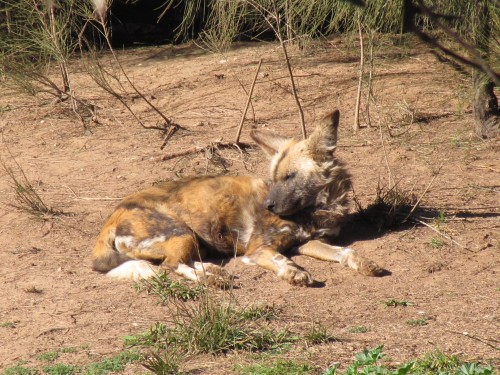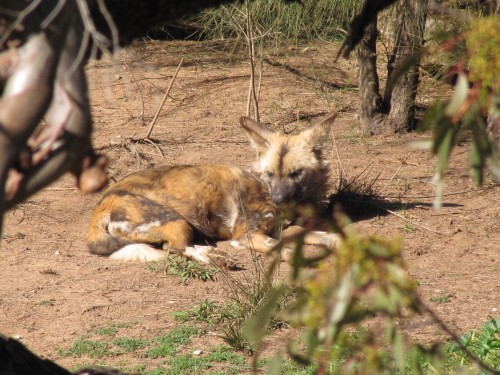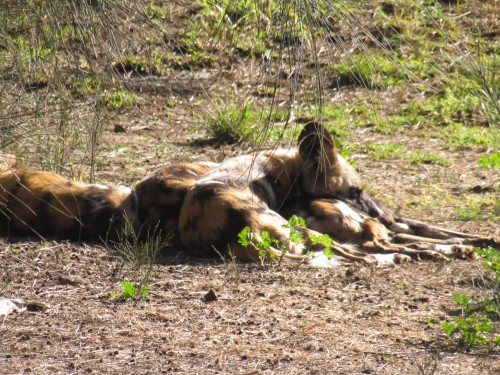A swamphen and some lemurs
Over the last few weeks I have been sharing photos of some of the birds I saw while visiting the Western Plains Zoo in Dubbo, NSW. On another occasion I commented that all of the birds seen in the zoo are actually birds that are free and not part of the exhibits. I also commented that many of these birds have adapted to the feeding times of the various animals – a free feed, so to speak.
The Purple Swamphen (see photo below) is one such bird. It was skulking around, perched on a flimsy branch of a tree, waiting for the Ring-tailed Lemurs (see photo above) to finish eating their dinner.
Two interesting birding blogs
It has been a while since I last featured other birding blogs here on my site. With all the writing I do, and other pressing responsibilities that life hurls at me from time to time, I don’t get nearly enough time to read many other sites about birds.
I hope to correct that oversight in coming weeks. Today I am going to feature two contrasting yet wonderful blogs, one about wildlife in general and the other specifically about birds and as a bonus, an article about bird photography.
Naturally South Australia features the ‘fascinating wild places and animals that define South Australia.’ Written and photographed by South Australian teacher and author Barry Silkstone, this blog highlights many of the things I love about my state. Of course he features many bird photos on a regular basis, and as a bonus you get photos of our animals as well. As a further bonus he writes about and photographs many of the places that make South Australia such a wonderful holiday destination, as well as a great place to live.
On the other hand Lirra Lirra: the magical mystery of birds is something else again. The author features only birds with photographs of the highest quality. Just the few featured on one recent post about Fairy-wrens made me almost weep for joy and total admiration – no, I am in awe. This site sent me scurrying to first check my bank balance, and then some camera shop sites. I thought some of my photos were rather good – until I saw this site. I really need to upgrade my camera equipment. Seriously upgrade. Sigh.
And while I am on the topic of bird photography, a few days ago I came across this article called 10 Tips for Photographing Birds. It includes some great ideas and hints on taking great shots of our wonderful birdlife.
Good birding – happy photography.
Trevor
Keep your cats inside
Warning: controversial material.
You have been warned. Cat lovers – this article may upset you, but this article is backed by solid scientific research.
A recent CSIRO study has estimated that over 75 million Australian creatures (birds, reptiles, mammals etc) are killed by cats every day. Read that again: 75 million daily.
Furthermore, cats have been identified as the prime reason for the extinction of mammal species in recent years. Extinction is forever.
If you love your cat, keep it indoors all the time. Other studies have shown that the average lifespan of a domestic cat allowed to roam freely is 4 years. However, cats living indoors all the time live, on average, 14 years. The implication is obvious; if you love your cat and want it to live a long life, keep it indoors.
Domestic cats left to roam very frequently go feral, or breed with feral cats. I hope you never come face to face with a truly wild, feral cat; they are enormous, wily, and truly terrifying hunters. We have over 20 million of them out there in our cities, suburbs, rural areas and the bush.
Federal Environmental Minister Greg Hunt recently told Background Briefing that he wants to focus on feral cat eradication, announcing a 10-year plan to control them.
“Right now we have the best part of 20 million oversized, over hungry, ferocious predators in the wild and that’s what we have to deal with,” he said. “Although, making sure that we have very solid and safe protocols with our councils for ensuring that [domestic] cats are registered and microchipped and sterilised I think is very important,” Mr Hunt said.
As I have stated here on a number of occasions, especially in the comments, is that cats have no place in our Australian environment.
Furthermore, both feral and domestic cats are a serious health risk due to being transmitters of the disease toxoplasmosis.
Further reading:
- Calls for Australian cats to be kept indoors
- The Mayo Clinic: Toxoplasmosis – a serious disease transmitted by cats, both wild and domestic.
Birds of the hippo enclosure
I think that the hippopotamus is a fascinating animal, but I will resist the temptation to write about it. After all, this site is about Australian birds, so… here we go.
The hippo enclosure a the Western Plains Zoo near Dubbo in New South Wales is a huge one – much larger than enclosures you will see in most zoos. It gives the animals plenty of room to move and live in a more natural environment than would otherwise be the case in captivity. As a part of this provision, the hippos in this zoo have a large water feature to enjoy – it’s really a small lake and they must feel really at home.
Being a water feature, it naturally attracts water loving birds. Two which were hard to overlook were the Little Pied Cormorant and the Little Black Cormorant, both shown in photos below. I’m not sure how many fish they would find in the murky water of the hippo lake, but there they were.
As we were watching the cormorants and the hippos I noticed a Sulphur-crested Cockatoo perched high in the branches of a nearby tree. I’m not sure if the cockatoo was checking out the availability of water from the hippo lake, or looking for a hollow to make a nest. Perhaps it was on guard, ready to warn the flock feeding on the ground of approaching danger.
Watch your back, duck
I was amazed at the danger this Australian Wood Duck had placed itself into. It was quietly grazing on the grass in the African Wild Dog enclosure at the Western Plains Zoo in Dubbo, and with its back to the pack sunning themselves about 30 metres away. They are cunning hunters and quite capable of sneaking up on an unsuspecting, tasty meal like a duck. I guess that they are well fed and have no need to chase after wildfowl, or any other birds which stray into their enclosure.
This reminded me of a guided tour we had a some years ago through our local Monarto Zoo, just 10km from my home here in Murray Bridge. The tour bus was slowly moving through the cheetah enclosure when the guide announced that the cheetahs loved running at full speed and catching the local ravens or magpies before they could get airborne again.
I decided then that I would never try to outrun a cheetah!
